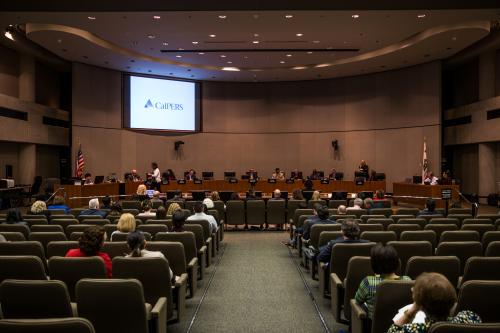This article originally appeared in The Hill on May 12, 2018.
When Hurricane Harvey decimated the Gulf Coast, causing some $125 billion in damage, Congress responded with tens of billions in aid. What would Congress do if instead the damage took place over more than a decade? We are about to find out as Congress is trying to prevent the collapse of multiemployer pension plans that would eliminate the pensions of more than 1 million Americans, bankrupt thousands of small businesses, and add possibly hundreds of thousands of dollars to Medicaid and other taxpayer obligations.
Congress faces this challenge in an unusual way. The Joint Select Committee on Solvency of Multiemployer Pension Plans is evenly divided between Senate and House members and by party. Its members are trying to reach bipartisan consensus this year. Multiemployer plans are negotiated between a union and an industry association. There are multiemployer plans for carpenters, truckers, musicians, mechanics, nurses, and more. Some 10 million workers for hundreds of thousands of large and small businesses all over America have these plans.
Like all U.S. pensions, multiemployer plans are underfunded. They are not underfunded because employers did not make contributions. They did, unlike some public plans. However, they relied on actuaries to decide how much to contribute. In the 1990s, the markets did better than actuaries predicted, so plans were overfunded. Since 2000, markets have done worse, so virtually all plans are now underfunded.
However, actuaries do not guarantee their estimates, and someone else ends up holding the bag. Who pays for this? Employers who promised employees a pension and benefitted from a lifetime of their work are legally responsible to provide them. But what happens if the employers have gone out of business? Do other employers, pensioners themselves, government, or all three pay in that case?
In most multiemployer plans, the current employers and employees have stepped up, digging into their pockets and paying more to preserve other pensions. Fortunately, in most cases, that will be enough. But some plans, because of industry changes, employer bankruptcies, or the loss of union members, simply do not have enough contributing companies and employees left to make up the loss.
The United Mine Workers fund, for example, has fewer than 10,000 active workers, but it is severely underfunded and responsible for 100,000 pensions. The one remaining employer and those active employees could not pay the shortfall for those 100,000 pensions even if everyone contributed their entire salaries. So this fund, and many others like it, will run out of money. The total loss is about as much as the $125 billion property loss from Hurricane Harvey.
The catastrophe will not stop there. Pension fund collapses can also bankrupt thousands of small businesses that are legally obligated to pay the shortfall, not just of their own workers but also those other businesses. Furthermore, the Pension Benefit Guaranty Corporation that is supposed to insure lost pension benefits will itself be insolvent and unable to replace anything more than a tiny portion of the lost benefits.
Pension fund collapses can also bankrupt thousands of small businesses that are legally obligated to pay the shortfall, not just of their own workers but also those other businesses.
To give the committee a chance to work out of the political glare, it will not report until after the midterm elections. Furthermore, any proposal supported by a majority both of Republicans and Democrats will get an automatic up or down vote in the Senate. Nonetheless, getting any compromise will be very difficult because in every case, the proposals made by one constituency are political poison to another.
Some proposed the government lend several hundred billion dollars to distressed plans, which they would invest and, over decades, use the earnings to cover their underfunding. The loans would ultimately be repaid with interest. However, many Republicans remember the distaste of voters for the 2008 “big bank bailout” and are loath to risk taxpayer money for “union pension plans.”
Others proposed reducing retiree benefits now in order to prevent them from being eliminated entirely when plans run out of money in five to 15 years. Congress passed legislation to allow this in 2014, but the Treasury Department, afraid of the political heat, turned down most applications. Current members of Congress, particularly Democrats, remain steadfastly opposed to cuts, especially on those already retired.
Others have suggested quadrupling the premiums charged by the Pension Benefit Guaranty Corporation so it has the funds to pay at least partial benefits when the plans run out of money. Unsurprisingly, the non-distressed plans do not like this idea. The distressed ones are not thrilled either, because the Pension Benefit Guaranty Corporation does not pay the full pension benefit. Raising guarantee levels to provide better protection would, however, increase premiums even more.
Why is there any hope for compromise? Because the collapse of these pension funds could end up doing as much or more damage than Hurricane Harvey. This Congress might surprise folks and decide that acting now to protect millions of seniors, preserve small businesses, and save billions for taxpayers is better than waiting until disaster happens.






Commentary
Op-edThe politics of pensions in America
May 29, 2018